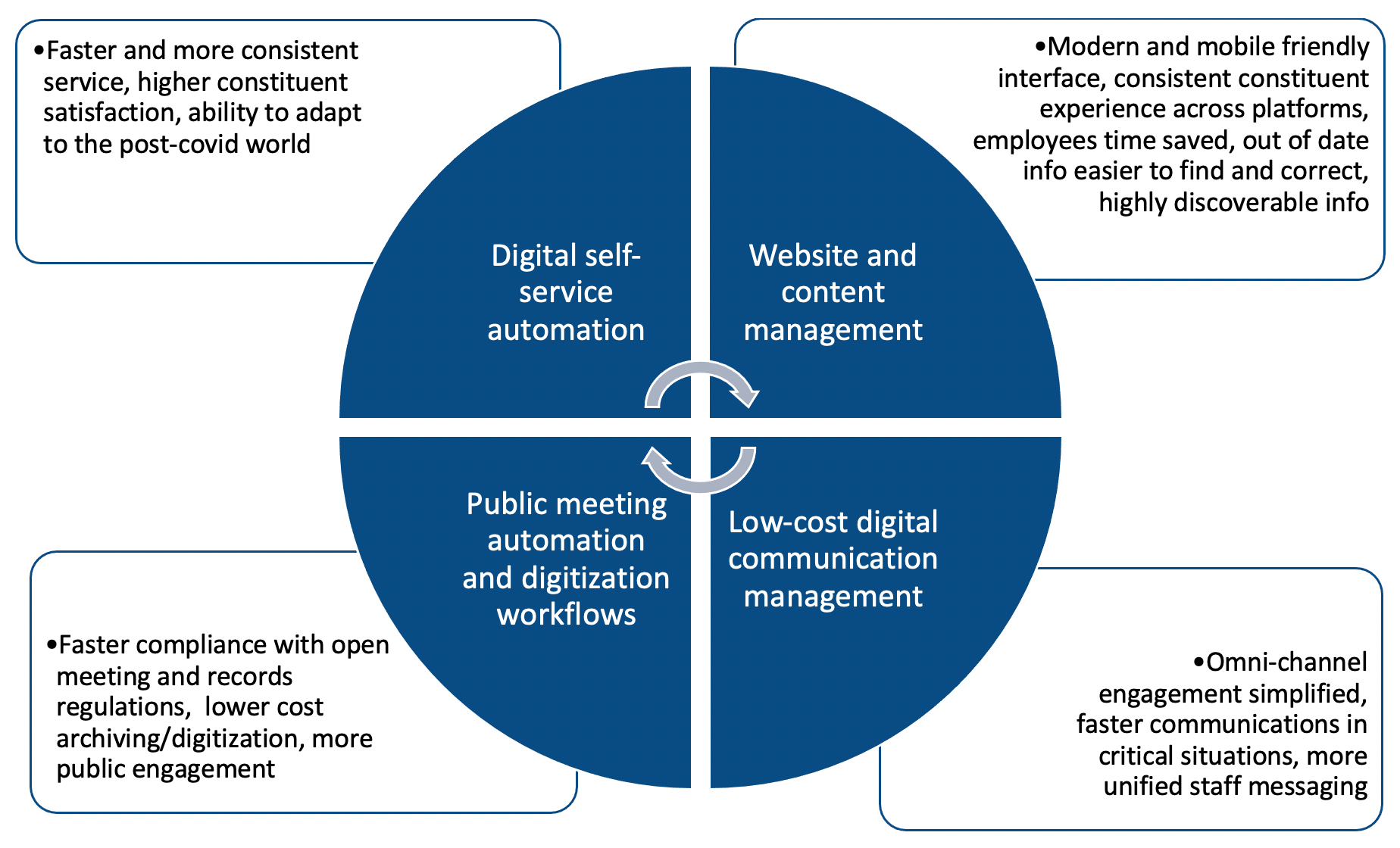
You want to modernize your organization, and digitally transform processes and tools to deliver the kind of best-in-class services expected from 21st century government, but where do you start? A key area to look at is your civic engagement ecosystem – or more simply put, the ways in which you deliver information and services to your community. Modern government relies more and more on digital tools to run workflows and digital channels to interact with constituents and with this efficiency in process in place it makes time for more high value interactions and thus increasing constituent satisfaction. With the rapid advancement of technology and improvements in UX design, digital interactions have become ubiquitous in how we engage everything from making reservations, booking travel, retail, and, now post-COVID, education. Governments, though slower to adopt these approaches, are now accelerating their digital transformation initiatives in order to catch up to the private sector and bring modern service delivery to their portfolios.
One of the first questions some people ask is, with all the pressure governments are under these days, why should modernizing civic engagement be a priority? The realities brought about by the COVID-19 pandemic have made these advancements even more important. They have also pushed people into the digital space who might not have otherwise relied upon it. This is happening across all manner of engagements, from education to retail to healthcare. IDC’s Consumer Experience Survey discovered that it is no different for government services. For instance, for services that have previously required in-person interactions, 17.9% of constituents have now done so digitally since COVID-19 first began and 30.5% of people would prefer in-person services to now be through digital channels, even after the pandemic has ended. These stats represent a fundamental shift in how people need government services to be delivered. Officials are recognizing that appropriate investments have to be made to meet this demand — 56.3% of government leadership survey respondents have said as a result of COVID-19 that their constituent engagement model would have to be expanded to online/digital or self-service models in order to meet expectations.
Changes in how government interacts with constituents has been accelerating for the last few years, with dedicated innovation and digital services teams being formed at levels of government from small cities to several states and even in the federal government with 18F, US Digital Services, and Defense Digital Services leading the way. Most governments, however, have been unprepared to meet the demand for digital services and interactions. Legacy systems, outdated websites, cumbersome workflows, and lack of online/mobile presence hampers adoption by agencies leading to challenges in how to properly respond and pivot to the new reality. When part of a holistic roadmap, key technology areas can provide synergies to build your organizational digital transformation in a way that provides both short- and long-term value. Some key technology areas include:
In the chart below, you can see how these different components of civic engagement technology can work together and further increase the likelihood for a successful digital transformation.

The start of your journey is all about knowing your organization and community and having a plan to go from A to B. This can set expectations and keep you on track as you navigate what may be new territory. Taking the following steps will help:
The journey isn’t always easy, and it doesn’t just take technology – it also demands a reflection on people, process, and an understanding of what’s possible when engaging constituents. As governments begin their journey and start deploying new tools, there’s some critical best practices to consider along the way to help achieve success:
In the end, it’s all about service and creating new ways to interact with constituents. Meeting their needs isn’t just about putting new polish on an old way of doing things, it’s about delivering the kind of service that builds trust and confidence in the system. With retail and media setting the pace, it is time for governments to step up their game and rise to the occasion. The time to create a vision and build a roadmap to that future is now, as the governments that are able to pivot to meet these new expectations will be best equipped to meet future demand and achieve an operational resilience in the face of the unknown.
Granicus govService is an end-to-end solution that enables government organizations to better meet the evolving needs of their populations, delivering an intuitive online citizen self-service experience & automating back-office operations. govService enables digital services to be launched in days and works with legacy systems to get the most out of current technology portfolios.
Granicus works with over 5,500 federal, state, and local government agencies to turn government missions into quantifiable results. Learn more about digital transformation and our solutions here.